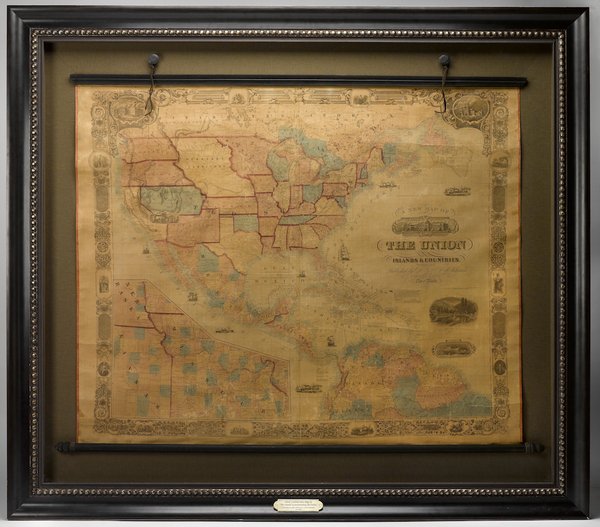Article: Semper Fidelis: WWI Marines Poster Added To DC Shop Walls
Semper Fidelis: WWI Marines Poster Added To DC Shop Walls
After a busy holiday season and inauguration week, our DC shop walls looked a little empty. We spent the last week adding a host of antique prints, maps, hand-carved eagles, and posters to our inventory and walls. One of the new additions to our CityCenter shop is this striking WWI U.S. Marines recruitment poster by artist Charles Buckles Falls, published in 1917.

This is one of the two known versions of the poster, created to inspire young men to join the Marines. A simple yet impactful design, the poster features the U.S. Marine corps emblem, printed in yellow and black, which rests on a field of deep green. Below is the text "This Device On This Hat Or Helmet Means U.S. Marines" in bold block letters. A border of white encircles the printed design. It was typical for recruitment offices to use the blank space at bottom to print their local addresses.
Until the advent of the Cold War in the 1950s, America traditionally maintained a relatively small standing army and navy. Whenever war broke out, it was necessary for the country to mobilize for the fight—to recruit (and sometimes draft) troops, to train them, and to produce the arms, equipment, and supplies needed to fight. When Congress and President Woodrow Wilson declared war on Germany in April of 1917, this mobilization took on extreme urgency. The government’s overarching goal was to persuade a traditionally isolationist American populace to invest and support the European war effort. They needed support financially, through the purchase of war bonds and rationing, and emotionally, through volunteer service (men for the armed forces, women for the nurse corps), displays of patriotism, and shared sacrifice.
New government organizations, especially the Committee on Public Information, were tasked with putting out a singular patriotic message, achieved primarily through posters and printed pamphlets. The war ushered in the biggest advertising campaign to date, critical to the wartime communication needs of every combatant: from raising money, recruiting soldiers and boosting volunteer efforts, to spurring production and provoking outrage at enemy atrocities. The stark, colorful graphic designs, created by some of the nation’s leading artists, elicited strong emotions. The posters played to the fears, frustrations, and faith in freedoms that lingered in people's minds during the war. The United States alone produced about 2,500 poster designs and approximately 20 million posters, nearly 1 for every 4 citizens, in little more than 2 years.
Charles Buck Falls was an illustrious American artist, illustrator, and designer. He worked for several plays designing sets and costumes, was employed by lithographic companies as an etcher and master printer, and freelanced as a newspaper and poster illustrator. He is best known, however, for the posters he designed for the Victory book campaigns of WWI and WWII.





